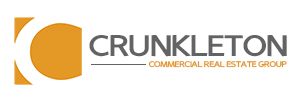
What do employers need in an office space to maximize productivity and retain talent? The answer to this question has evolved through the years, leading to business owners re-evaluating their organization’s layout, available amenities, and workers’ wellbeing.
What began with a focus on status and formalities in the 1950s has changed to a culture of community, wellness, and collaboration. As the needs of office workers evolve, so does the setting in which they work.
Typical employees spend around 40 hours a week within an organization and some leaders are finding it challenging to deliver the flexible type of spaces that are desired. But, speaking with a broker who knows and understands the office industry can help.
Before we explain today’s modern workspace, let’s take a look at how offices have changed throughout the years. Although these were considered the norm within each generation, there are always exceptions based on region, industry, and organizations.
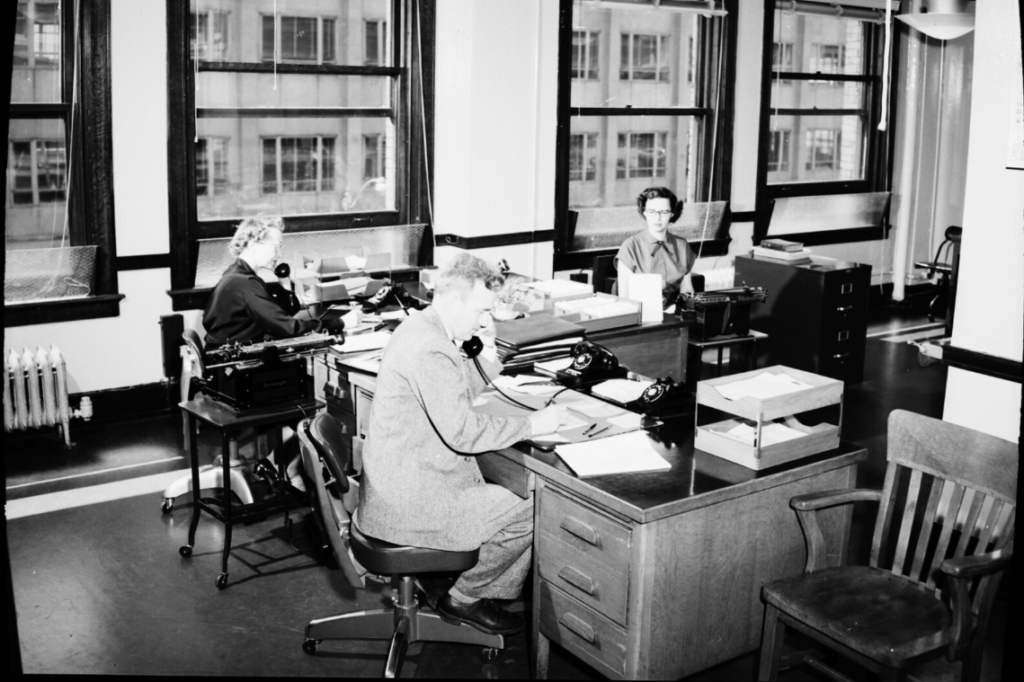
A Focus On Hierarchy: 1950s
Landing the coveted corner office in the 1950s was a sign of leadership and rank. While executives usually had their own private office spaces with various luxuries (like windows), the majority of workers dwelled in a large open space with numerous small workstations sitting back-to-back—similar to a classroom.
Environments were formal, usually with enforced dress codes, and open layouts were in high demand. In fact, it wasn’t until the 1960s that cubicles were widely used, meaning that in the 50s most workers were lacking in privacy.
Spaces were, perhaps, less conducive to creativity and more focused on the bottom line. This was also a time before computers were widely used in offices, so employees’ workspaces—although small—had to allow for much more paperwork and manual duties.
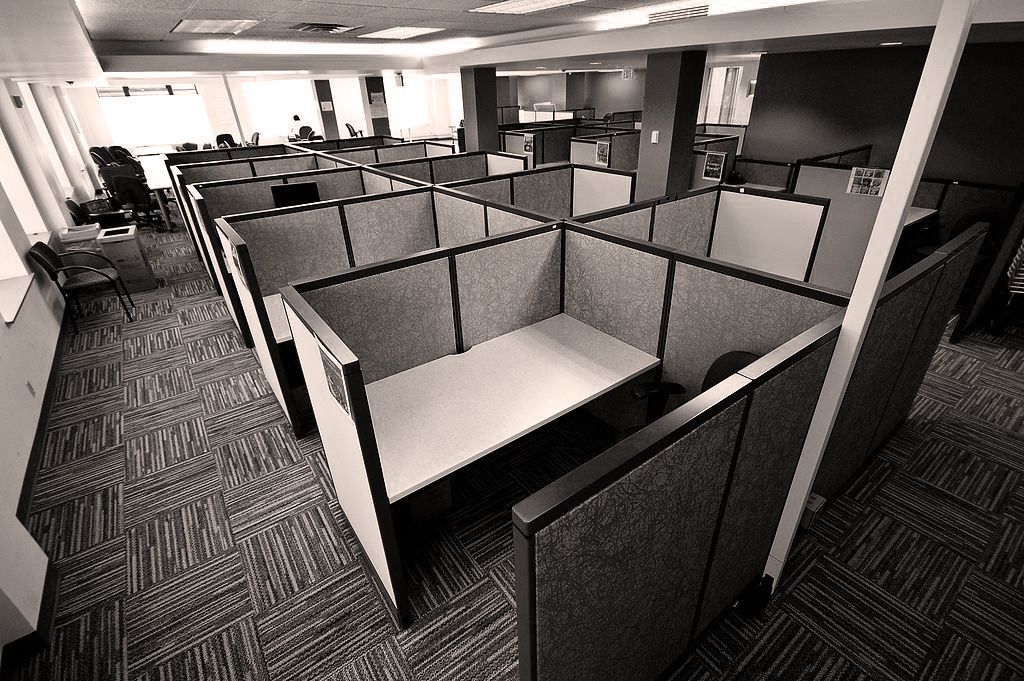
Cubicle Craze: 1960s
Although the open office space could pack in many workers and get the job done, a designer named Robert Propst saw more potential for privacy and comfort within the workplace. However, he later despised what became of his invention.
Propst heavily researched office efficiency and noted that workers in private offices tended to be more productive. They had various surfaces to work upon and sat away from the many ringing telephones and hammering typewriters that were ubiquitous with office life.
Originally called the “Action Office”, cubicles were designed to be customizable to individual needs. But this didn’t come to fruition as the inventor had hoped. He ended up designing an “Action Office II”, which was slightly more successful but was ultimately used in contrast with his vision for more privacy and customization.
Essentially, they were used less to incorporate individuality and more to accommodate a larger number of employees. Cubes also grew in popularity because they were cheaper than buying individual furniture, file drawers, and surfaces for each worker.
This was also the age at which early computers were becoming more used. But it would be awhile before smaller and user-friendlier models came around.
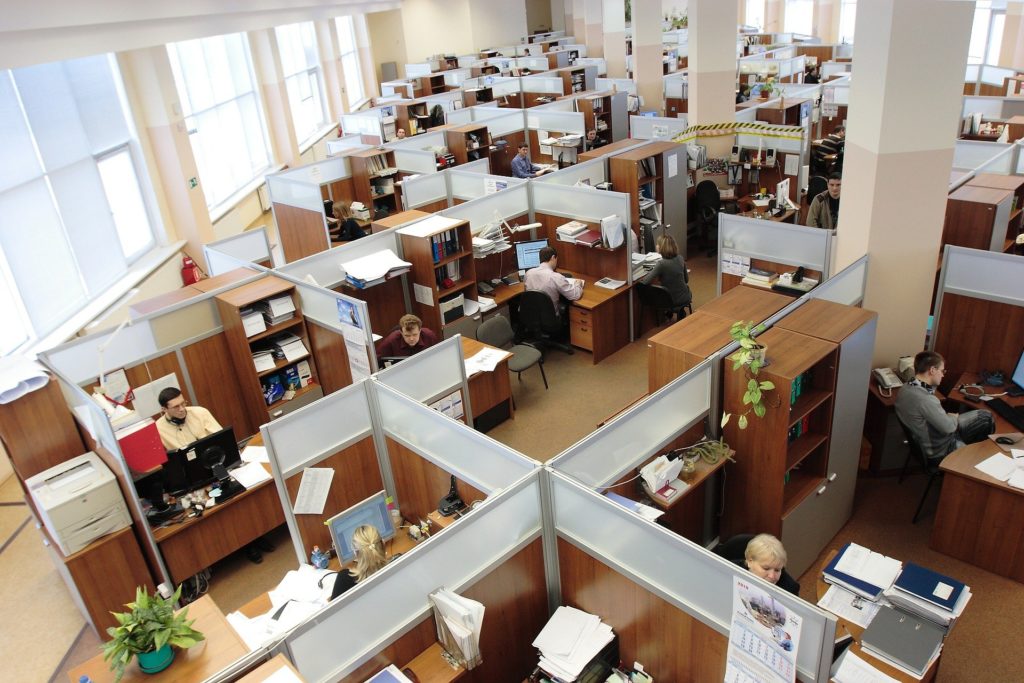
Departmental Separation: 1970s – 1990s
Rank began to play second fiddle to workers’ needs during this period. While cubes were still in high demand, items like technology, design, and comfort were coming to the front of conversations.
Cubes were typical, but there was slightly more focus on separating workers by department to create a better office flow (something we have discussed on our blog before). And workers were being asked how they could be happier in the office.
Over these decades, department heads began to mingle more and more with their colleagues as collaboration was slowly encouraged.
Technology experienced a boom during this period as well thanks to the addition of the Internet. And the first version of Microsoft Word (Version 1.0) was launched. Since then, it has been a race for offices to keep up with changing technology.
With the addition of technology also came an interest in office culture. This prompted many studies on what the ideal—successful—office environment looked like.

More Open Offices: 2000s
This is the decade in which the desired changes in office design became more nuanced. Collaboration became a buzzword that was difficult to ignore, and offices began trending back to more open floor plans. However, things were less uniform throughout the office landscape.
Spaces encouraged socialization, team brainstorming, and sharing—something very unlike the structure of the 50s. Social interaction was once discouraged but quickly became the goal. Offices were designed with more open areas and communal spaces with fewer walls and barriers.
Technology was moving very fast during this time and more and more tools were introduced into the workplace. Texting and emails replaced memos and phone calls and computers increased in intelligence and functionality. Technologically efficient offices had an edge on other companies that stayed behind tech trends.
But even as offices became more open, there were still issues to address. Too much collaborative space was starting to affect productivity in a different way. It made it difficult for people who needed extreme focus on their tasks to get anything done because of extra noise and movement around them. It was clear that the highest functioning office would have the best of private, collaborative, and socialization spaces all in one.
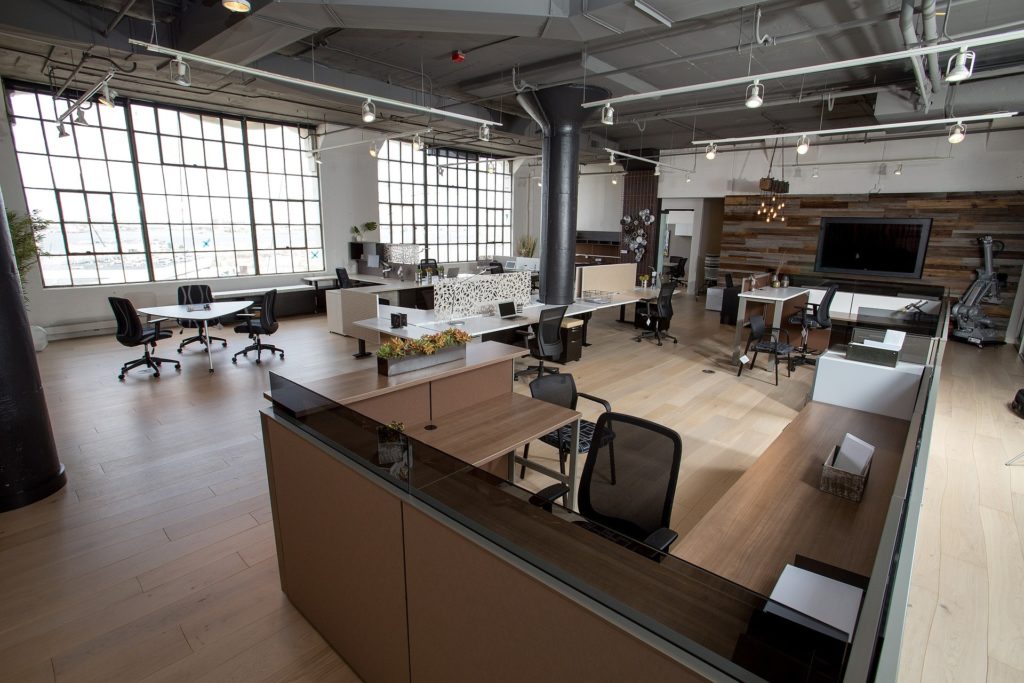
Flexible Office Design: 2010s – Today
Creativity and collaboration have hit an all-time high within today’s modern office. Employees have individual needs based on their tasks, and business owners are taking steps to provide them.
Nowadays, office layouts reflect users’ needs for flexibility. This means having options for private, collaborative, and semi-private spaces (even cubes). For instance, creative teams may need collaborative spaces to brainstorm, conference rooms with the latest technology, comfortable areas to relax, and private spaces to think. The possibilities are endless. But it doesn’t have to be daunting when searching for an office space.
Knowing your organization and its goals is a must when designing the ideal office. Each business will have unique needs that need to be addressed. Having workers weigh-in and explain how they work best can often be a guideline. It’s also helpful to reach out to industry experts who can discuss the best ways to implement your vision.

Offices are trying to provide more requested amenities to attract and retain talent as well. Leasing spaces within larger developments that offer on-site restaurants, craft coffee shops, fitness, daycare, and entertainment options is growing in popularity. Workers want convenience and flexibility and will gravitate toward employers who can provide it. It’s all about the energy that the space evokes.
We’ve come a long way over the years and it will continue to evolve in the future. What does tomorrow’s office look like? Let us know what you think in the comments.
(Eric St. John at Crunkleton specializes in office leasing and can help guide you toward your goals. If you have questions, you can reach him at 256-536-8809 or by email at eric@crunkletonassociates.com.)
![]()
Make sure you’re staying on top of the latest trends, newest developments, and hottest new stores in Huntsville by subscribing to our weekly blog updates!
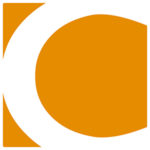
CRUNKLETON COMMERCIAL REAL ESTATE GROUP
INFO@CRUNKLETONASSOCIATES.COM
256-536-8809
DEVELOPMENT | LEASING | BROKERAGE | PROPERTY MANAGEMENT | INVESTMENT CONSULTING
